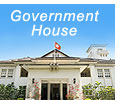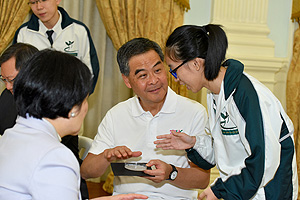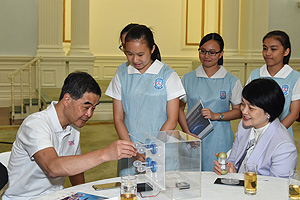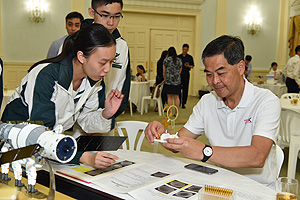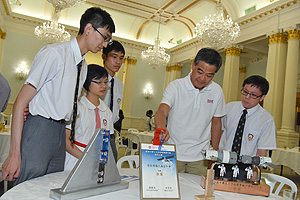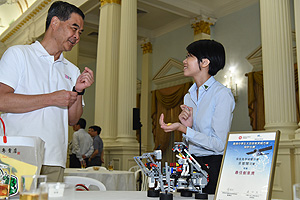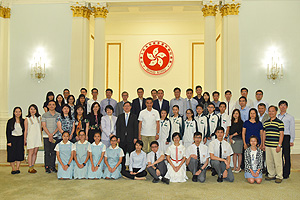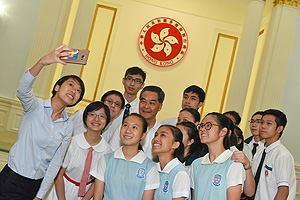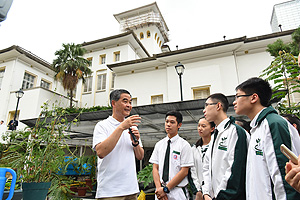
|
Experiments of Hong Kong secondary students to be launched into spaceHave Hong Kong secondary students ever thought of doing science experiments in space under zero gravity? Science experiments designed by students from three Hong Kong secondary schools will be sent into space in the manned spacecraft Shenzhou-11 in the middle of this month. The experiments will be conducted in the country's space laboratory in Tiangong-2. The three secondary schools, namely Shun Tak Fraternal Association Yung Yau College, Christian and Missionary Alliance Sun Kei Secondary School and Po Leung Kuk Laws Foundation College, are respectively the champion, first and second runners-up of the Space Science Experiment Design Competition for Hong Kong Secondary School Students. In the same competition, Po Leung Kuk Lee Shing Pik College won the Most Creative Award and Shun Tak Fraternal Association Yung Yau College won the Best Potential Award. This afternoon, I held a reception at Government House for these five winning teams, their parents and teachers, as well as representatives of the Hong Kong Productivity Council which helped organise the competition. Each team introduced its winning project. Some of the students were inspired by female astronaut Wang Yaping's space lecture in Tiangong-1, which demonstrated the creation of a water membrane with a bag of water and a metal ring. The students proposed making a multi-purpose porous polymer membrane under zero gravity. This would help fabricate artificial skin in the future. Other students proposed raising silkworms in space, comparing in parallel their growth with those raised on Earth. Some other students proposed doing an experiment to find out whether a double pendulum would behave more regularly in a microgravity environment. This would help deduce whether gravity is a factor generating chaotic motion. These three experiments will be conducted in Tiangong-2's laboratory. Arrangements have been made for some of the student winners to visit the Jiuquan Satellite Launch Centre in Gansu to witness the launch of Shenzhou-11 with their proposed experiments in the middle of this month. This is the first time that Hong Kong students are invited to the Centre to watch the launch of a spacecraft. Our country has made great strides in technology. Some of the achievements include the launch of the Changzheng rockets, the Chang'e Lunar Exploration Programme, the Jiaolong submersible that can dive to a depth of 6,000 metres and the home-made large aircraft C919. Micius, the world's first quantum satellite, was successfully launched in August this year, and the world's largest radio telescope, with a size of 30 standard football pitches, came into operation in Guizhou in late September. China also has the world's leading high-speed rail technology, and has successfully built the fastest supercomputer with the largest memory capacity in the world. Our country's Beidou Navigation Satellite System is also among the four biggest navigation satellite systems in the world. During my secondary school years, people in my generation watched on the television as American astronauts landed on the moon. In the decades to follow, space exploration was led by foreigners and we were just an audience. Now, we have come far beyond because Chinese people have a role to play in space exploration. I told the students today that I hoped, someday, Hong Kong people could play a role in space exploration, and that one of them would become Hong Kong's first astronaut, doing experiments in the country's space laboratory or space station.
October 2, 2016
|
||||||||||||||||||||||||||||||
|

